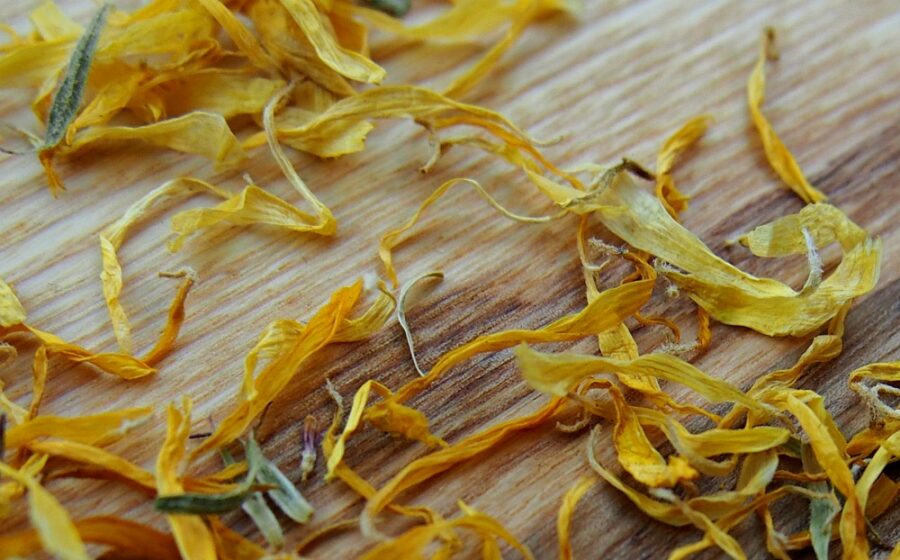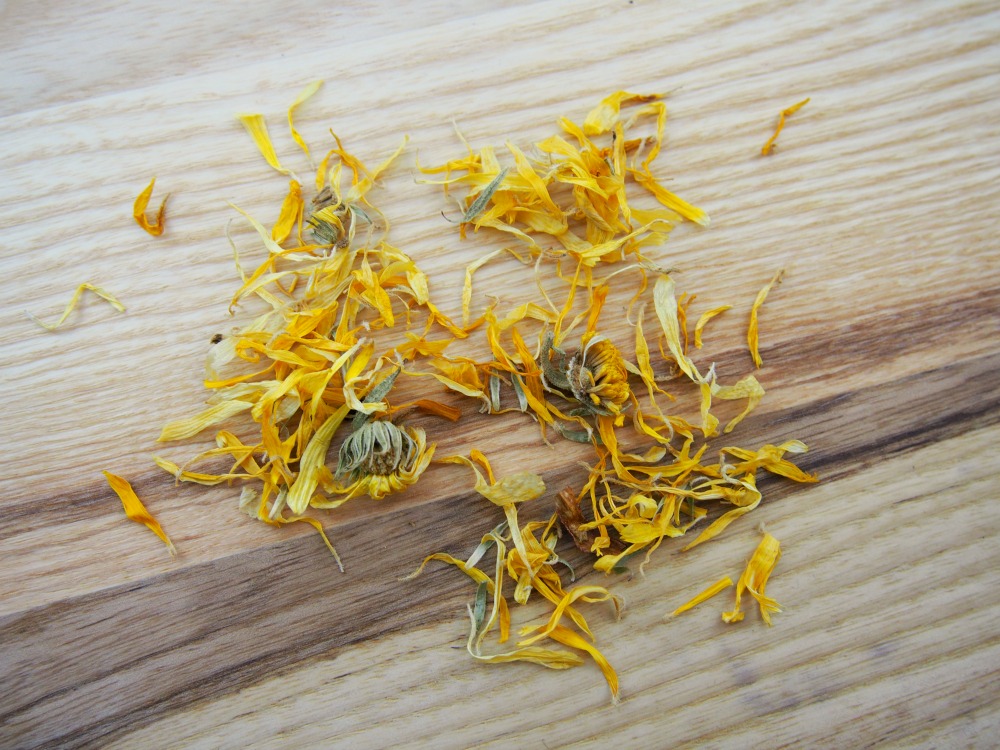[W]hile my hometown of Portland, Oregon, is more known as a coffee town, a good cup of tea is never far. Recently I sat down for some in one of my favorite locales. Despite being one of the city’s best coffee roasters, they always have a few interesting teas on offer.
My beverage of choice was a simple tea made of fresh calendula, a member of the marigold family. I was familiar with calendula as a healing herb, but I’d never seen it served solo—tea makers such as myself tend to add it in with other teas and herbs. As my pot of golden yellow flowers steeped, both the friend joining me as well as our neighbors admired the steeping flower, intrigued. The barista, overhearing our conversation, mentioned how calendula was poised to be “the next big tea breakthrough.” I said nothing while smiling at her enthusiasm. I couldn’t help but wonder if she knew how long calendula has been considered a wonder drug.
It is believed the Egyptians were the first to harvest calendula for medicinal purposes, using it to treat wounds and make skin salves.
As the plant is native to the area, it is believed the Egyptians were the first to harvest calendula for medicinal purposes, using it to treat wounds and make skin salves. The Romans put calendula in their wine to ease digestion. In subsequent centuries scientists and herbalists have found success in using the flower to treat inflammation, bruises and strains, high blood pressure, ulcers, and skin rashes. On the spiritual side, cultures from the Hindus to the Mayans claimed that calendula could make one more clairvoyant and bring good luck to legal or business affairs. It’s also been practical in the food business—up until recently, it was a key ingredient in many yellow food dyes. All that in the creamy yellow leaves and buds of the calendula.
Clearly, calendula has staying power. But I’m curious how it slipped out of view, only to resurface again as the hip new herb on the block? You don’t have to look hard to find calendula on the menus of many teamakers right now, in addition to finding its way into organic soap blends, essential oils, and beauty creams.
I asked one of my favorite master tea blenders, Kari Dandrea of Pureblend Tea, about calendula. She thinks that “our culture is craving a more natural lifestyle and are just getting hip to the benefits of calendula: a flower that has been used for centuries” in various ways and means. Given the rise in organic foods and farm-to-table culture, it makes sense that healing herbals like calendula are gaining mainstream acceptance. Krista Bjorn, a farmer who blogs at Rambling Tart, says that “calendula is easy to grow organically in your own back yard and still packs a powerful blast of nutrients—not to mention being delicious as a tea or to eat. Who wouldn’t want more of that?”
Indeed, I believe tea is healing, and I know I’m not alone in seeking out more natural remedies. And what’s not to love about the bright, cheery color of calendula and its peppery flavor? Some say it tastes a bit like saffron, which explains why its bittersweet essence pairs so nicely with other tisanes, such as hibiscus or mango, though I’m now a convert for enjoying it solo in a hot cup of water. As for the hip factor—calendula, your secret is safe with me.
—Story and photos by Andy Hayes, founder and creator of Plum Deluxe Teas.

















